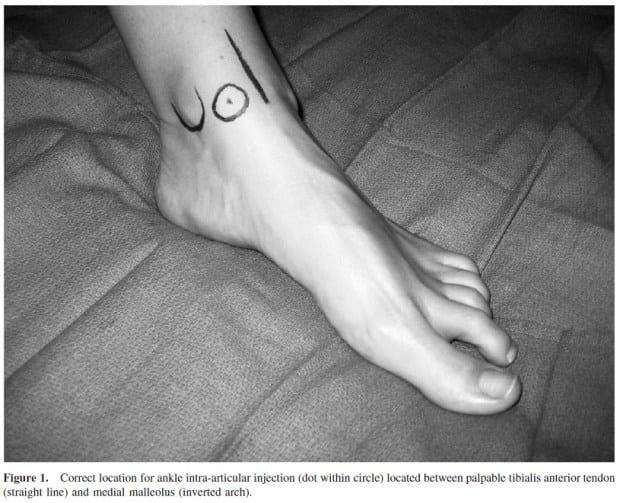Use hematoma blocks for wilderness anesthesia
You’re on a simple hiking expedition and suddenly a member of the group takes a wrong step on the trail and collapses in pain. You examine them carefully and discover a gnarly ankle fracture-dislocation. It’s a bit of a walk back to camp, and you’re worried about the foot’s neurovascular status during the return. What do you do?
Well, if you were in the ED, you’d likely hook the patient up to every single monitor in the room, get 7 providers in the room, fill out the mandatory checklist, and perform procedural sedation. However, you’re out in the woods, and the pine trees don’t have etCO2 monitors built into them. You could give a hefty dose of pain medicine and try to yank the foot back into place, but prior experiences trying to reduce limbs without adequate analgesia or sedation lead you to decline that option. Unfortunately, now you’re out of options.
Or so you thought. It turns out that there’s a surprisingly effective option promoted by our orthopedic colleagues (or at least one of them). Enter the intra-articular hematoma block of the ankle. You may have done intra-articular anesthesia with a dislocated shoulder before, and you’ve probably done hematoma blocks for wrist fractures. It works for those, so use it here as well. The author of the paper is even nice enough to give a figure demonstrating exactly where one should put the block, assuming the anatomic landmarks aren’t obliterated by the fracture-dislocation.

Insert the needle in a lateral and cephalad direction. If you hit the talus, pull out and aim higher. Aspirate blood, and inject your lidocaine. Done correctly, the patient will have complete anesthesia to the joint, allowing you to perform a successful reduction. The article has a nice technique for accomplishing reduction if your usual brute force doesn’t work. It’s similar to the finger trap technique taught to reduce a Colles. Basically, you place the leg into tubular fabric and suspend the affected extremity in the air. Gravity and rotational forces then gradually pull the ankle joint back into place. If you don’t happen to pack stockinette in your first aid kit, you can use socks, thermal underwear, long shirt-sleeves, or even tight-fitting pants instead.
Just make sure and immobilize the joint afterwards, and remind the patient that just because their ankle is numb doesn’t mean it’s a good idea to stand on it. And while this article only discusses ankle injuries, other fractures are amenable to hematoma blocks as well. Yet another arrow to add to your wilderness medicine quiver.
References
- Dean DB. Field management of displaced ankle fractures: techniques for successful reduction. Wilderness Environ Med. 2009 Spring;20(1):57-60 [PMID 19364168]

EBM Gone Wild
Wilderness Medicine
Emergency physician with interests in wilderness and prehospital medicine. Medical Director of the Texas State Aquarium, Padre Island National Seashore, Robstown EMS, and Code 3 ER | EBM gone Wild | @EBMGoneWild |
